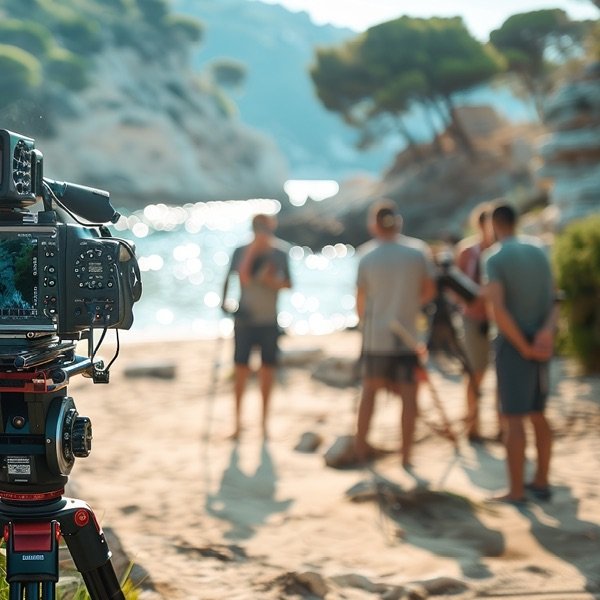Why Authenticity Matters in Video Production
Video content has become a cornerstone of effective marketing strategies. With consumers increasingly turning to videos for information and entertainment, brands must ensure their content stands out. Authenticity in video production is crucial to this effort. Authentic videos resonate more deeply with audiences, fostering trust and engagement. This blog explores why authenticity is vital in video production and offers insights into how to achieve it.
Understanding Authenticity in Video Production
Authenticity in video production refers to creating content that genuinely reflects the brand’s values, story, and message. It involves being truthful and transparent, avoiding overly polished or scripted appearances. Authentic videos feel real and relatable, connecting with viewers personally. This connection is vital in building trust and loyalty, as consumers are more likely to engage with content that feels genuine rather than staged.
Authentic content stands out because of its naturalness and sincerity. While inauthentic videos may use exaggerated claims, scripted testimonials, and overproduced visuals, authentic videos embrace imperfections and real moments. This authenticity fosters a sense of credibility and trustworthiness, which is crucial for audience engagement.
The Impact of Authentic Videos on Audience Engagement
Statistics and studies consistently show that authentic videos significantly enhance audience engagement. For instance, a study by Stackla found that 86% of consumers say authenticity is a key factor when deciding what brands they like and support. Authentic videos drive higher engagement rates, as viewers are more likely to share, comment, and interact with content that feels real and relatable.
Successful campaigns often highlight the power of authenticity. For example, Dove’s Real Beauty campaign, which featured everyday women rather than models, garnered widespread acclaim and engagement. Similarly, Patagonia’s environmental activism videos resonate deeply with their audience, fostering a loyal community of supporters. These examples illustrate how authenticity can lead to increased viewer retention, higher conversion rates, and a stronger brand reputation.
Building Trust Through Authentic Storytelling
Storytelling is at the heart of creating authentic video content. Authentic storytelling involves sharing genuine experiences, emotions, and insights. It’s about conveying a brand’s journey, values, and mission in a way that resonates with the audience. Authentic stories are relatable, evoke emotions, and inspire action.
To create compelling and genuine stories, focus on elements such as real-life experiences, honest emotions, and relatable characters. Use clear and straightforward language, avoid jargon, and highlight personal journeys. Authentic storytelling engages viewers while building a deeper connection with the audience, fostering long-term loyalty and trust.
Real-Life Examples of Authentic Video Storytelling
Authenticity in video storytelling is exemplified across various industries, from healthcare to tourism. In healthcare, videos featuring real patients and healthcare professionals sharing their experiences create a powerful emotional connection. For instance, a patient’s journey through treatment can be documented, providing valuable insights and inspiration to others facing similar challenges. In education, videos showcasing real students and teachers discussing their experiences can make educational institutions more relatable and appealing. Non-profits benefit from authentic videos by highlighting the genuine impact of their work through the stories of those they help. In tourism, showcasing authentic experiences of visitors exploring local attractions can significantly enhance a destination’s appeal.
Techniques for Achieving Authenticity in Video Production
Achieving authenticity in video production requires careful planning and execution. During the pre-production phase, focus on script writing that reflects real-life scenarios and natural dialogues. Casting should prioritize real people over actors whenever possible, as this adds a layer of authenticity. Choosing genuine locations rather than artificial sets can also enhance the realism of the video.
During production, capturing genuine moments is crucial. This involves being ready to film candid interactions, genuine emotions, and unscripted moments. Encouraging participants to speak and act naturally, rather than following a rigid script, helps capture authenticity. In post-production, minimal edits, natural pacing, and the inclusion of behind-the-scenes footage can contribute to a more authentic final product.
Authenticity in Interviews and Testimonials
Interviews and testimonials are powerful tools for conveying authenticity. To conduct interviews that elicit genuine responses, and create a comfortable environment for the interviewees. Ask open-ended questions that encourage detailed and personal answers. The goal is to capture the true emotions and thoughts of the interviewees, making the content relatable to the audience.
Real customer testimonials are particularly impactful. Genuine testimonials, where customers share their real experiences and outcomes, build trust and credibility. Avoiding scripted testimonials and allowing customers to speak freely about their experiences can significantly enhance the authenticity of the video content.
Authenticity is a crucial element in video production, driving audience engagement and building trust. By focusing on genuine storytelling, capturing real moments, and prioritizing transparency, brands can create video content that resonates deeply with viewers. At 20/20 Visual Media, we specialize in producing authentic videos that reflect your brand’s true essence. Embrace authenticity in your next video project and experience the transformative power it can bring to your audience engagement and brand loyalty. Are you ready to work on a video that exudes the authenticity of your brand? Contact our team today!

